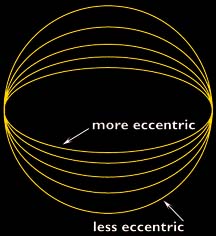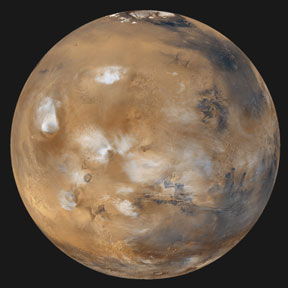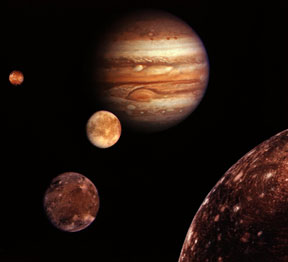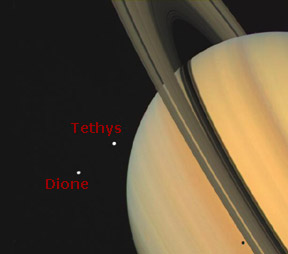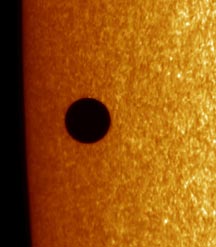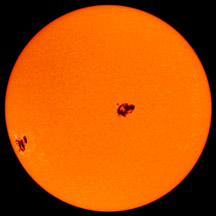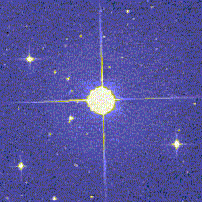Click on image for full size
Windows to the Universe original artwork by Randy M. Russell
Mars Opposition in August 2003
News story originally written on August 7, 2003
On August 27, 2003, Earth and Mars will be closer together than they have been in thousands of years. Mars will pass within 55,758,006 kilometers (34,646,418 miles) from Earth. Astronomers have calculated that the last time Earth and Mars were closer together was nearly 60,000 years ago! The last people to get a closer look at Mars than this were Neanderthals!
Earth moves around the Sun more quickly than Mars. Every 26 months, Earth "laps" Mars on "the inside lane". When Earth passes Mars, astronomers call the event an "opposition". During an opposition, the Sun, Earth, and Mars form a straight line with Earth in the middle. Viewed from Earth, Mars is on the opposite side of the sky from the Sun. Opposition is the time in each 26-month cycle when Mars and Earth are closest together.
The distance between Earth and Mars is not always the same at opposition. The orbit of Mars is an oval, not a circle. Earth can be closer or further from Mars at opposition, depending on where in Mars's orbit the Red Planet is when Earth passes it. This time around the two planets get really, really close together! Since Mars will be so close during this opposition, it will be very bright in the sky and will look larger than usual through a telescope.
How big of a deal is this? Not that big, actually. Mars will only be a little closer, a little brighter, and will look just a little larger than during other "close" oppositions. If you look at Mars in the sky, it will still be just a dot... but a very bright dot! If you get a chance to look at Mars through a telescope, it will seem a tiny bit larger than at any other time during your life. However, you have probably seen pictures of Mars taken by spacecraft. Those pictures show a lot more detail than we will ever see from Earth.






